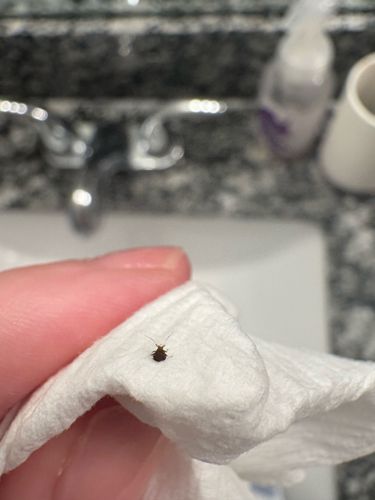Bed Bug (nymph)
Scientific Name: Cimex lectularius
Order & Family: Hemiptera, Cimicidae
Size: Nymphs can range from 1 mm (first instar) to 4-5 mm (fifth instar, fully engorged). Adults are typically 4-5 mm (about the size of an apple seed).

Natural Habitat
Primarily indoor environments, especially beds, mattresses, bed frames, furniture, and cracks/crevices near sleeping areas. They are highly adapted to living with humans.
Diet & Feeding
Strictly hematophagous, meaning they feed exclusively on the blood of warm-blooded animals, with a strong preference for human blood. Nymphs and adults require blood meals to grow and reproduce.
Behavior Patterns
Nocturnal feeders, emerging from their hiding spots at night to feed. They are attracted to carbon dioxide and body heat. They tend to live in groups in harborages. Females lay eggs (nits) in sheltered locations, often in clusters. Nymphs go through five instars, requiring a blood meal at each stage to molt and grow.
Risks & Benefits
Potential risks: Bed bug bites can cause itchy welts, leading to skin irritation, allergic reactions, and secondary skin infections from scratching. They can cause significant psychological distress, sleep deprivation, and anxiety. While not known to transmit diseases to humans, their presence is a nuisance and can be very difficult to eradicate. There are no known benefits.
Identified on: 10/19/2025